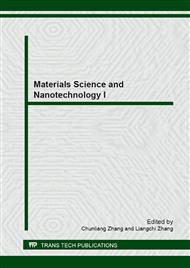p.346
p.351
p.358
p.362
p.368
p.373
p.377
p.383
p.388
The Effect of Temperature on Performance of Powder Activated Carbon-I Membrane Biological Reactor (PAC-IMBR)
Abstract:
Under the unique long-time low temperature conditions (average 8°C) of the northern winter in China, the effects of temperature on water quality and the performance of Powder activated carbon-I Membrane biological reactor (PAC-IMBR) were studied and demonstrated quantitatively by the NH4+-N value, chemical oxygen demand (CODCr) and transmembrane pressure (TMP). The results showed that the supernatant NH4+-N decrease from 1.20 mg·L-1 to 0.81 mg·L-1 with the temperature rising from 8°C to 20°C, while 30.8 mg·L-1 to 23.1 mg·L-1 for the CODCr. However, the temperature rising have no marked influence on the effluent NH4+-N and CODCr due to the filtration of membrane. TMP was measured to characterize membrane fouling and it is clear that the TMP and its increasing rate descend with the temperature rising, which demonstrates that the raising temperature is advantageous to prolong the cycle of PAC-IMRB and alleviate the membrane fouling.
Info:
Periodical:
Pages:
368-372
Citation:
Online since:
December 2012
Authors:
Price:
Сopyright:
© 2013 Trans Tech Publications Ltd. All Rights Reserved
Share:
Citation:



